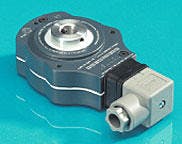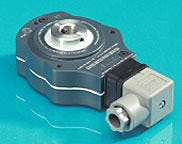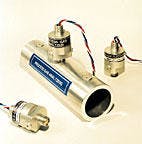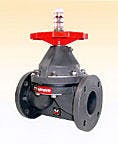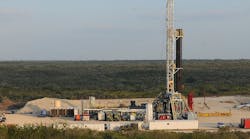Intrinsically safe hollow shaft encoder
The new Series 55 hollow shaft low current intrinsically safe encoder is available for oil field work. It's designed for shaft sizes up to 5/8 in. It is:
- Certified to CENELEC and UL standards.
- IS classified for II IG EEx ia IIC T4 (Ta = -20° to +60° C.).
- IS classified for I MI EEx ia I (Ta = -20° to +60° C.).
- US IS standard UL913 for division 1 and 2 class 1 group A, B, C, and D.
- A two-wire operation, 4-20 ma.
- Certified IP 64.
- In compliance with the Atex directive, SIRA 00ATEX2126X.
The unit is designed to be used in current or voltage modes.
Source: Hohner Corp., 5536 Regional Rd. 81, Beamsville, Ont. L0R 1B3.
Analyzer monitors ultrahigh concentrations of gas
A new process-control analyzer monitors ultrahigh concentrations of virtually any hydrocarbon gas.
Carrying full FM and CSA approvals, the new gas analyzer is designed for use wherever precise monitoring of methane, propane, butane, ethanol, or any of some 70 hydrocarbon gases is needed.
The analyzer taps into the gas-flow manifold or pipe for continuing in-stream and on-stream sampling. Readout can be fed to upstream control valves for automatic correction of process parameters; it can also go to computers, recorders, and alarm systems.
Any change in gas concentration is immediately detected by infrared sensors in the analyzer; resulting milliampere deflections reflect even miniscule variations.
Built-in circuits automatically compensate for aging components and changing ambients. And because this new analyzer uses simple optics-no mirrors or beam-splitters-it shrugs off high gas concentrations, low oxygen levels, and high and low pressure extremes.
Source: Sensor Electronics, 5500 Lincoln Drive, Minneaplis, MN 55436.
Plastic diaphragm valves for 3, 4, and 6 in. pipelines
New, all-plastic diaphragm valves in sizes for 3, 4, and 6 in. pipelines are designed to control liquids, gases, and slurries in on-off and modulating services.
These are not scaled-up versions of the company's existing smaller size diaphragm valves, but are especially designed to meet the applications requirements required by larger size valves.
A rugged, sure-grip handwheel helps make it easy to open or close the valve. And in modulating service, the handwheel permits precise adjustment of the desired flow rate. A highly visible stem position indicator shows, at a glance, the position of the valve-open, closed, or any position in between.
The all-plastic construction means that they will not fail, jam, stick, or freeze in position because of rust or corrosion, the firm notes. Valves will not contaminate sensitive process fluids. The valves never need to be painted or coated.
Valves are available with either EPDM or PTFE diaphragms in PVC and Corzan CPVC construction and come with flanged-piping connections.
Source: Hayward Industrial Products Inc., 900 Fairmount Ave., Elizabeth, NJ 07207.
Turnkey cleaning services for pipelines
Solutions to pipeline cleaning problems are promised via SurfSweep programs, which are designed to increase efficiency and production, improve flow rate, prevent corrosion, improve safety, and reduce costs.
The company has extended its Surf Sweep programs to include all stages of a pipeline cleaning program.
The company evaluates the complete mix of operational, mechanical, and chemical components to find the most economical solution to cleaning problems. The system begins by conducting a solids screening and chemical analysis of a pipeline. This allows pipeline cleaning specialists to know up front what kind of contaminants are in the line and to assemble the right chemical and mechanical resources to clean it effectively.
After the nature of the deposits in a pipeline is determined, this firm's representatives are able to select the appropriate chemical and determine the mechanical design of the program to support each customer's individual goals. The company conducts scientific analysis to determine the volume of chemical remaining and the efficiency of each run. It also is able to simplify liquid and solid waste disposal by using products that work quickly and efficiently, thus requiring smaller volumes to be used in the pig train.
Source: Baker Petrolite Div., Baker Hughes Inc., Box 5050, Sugar Land, TX 77478-5050.
